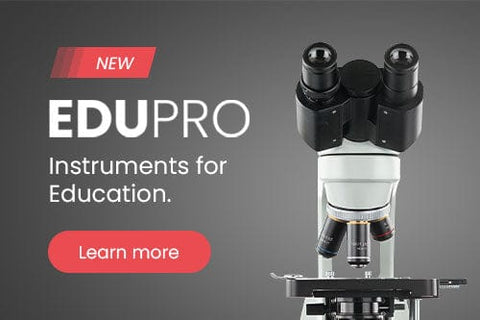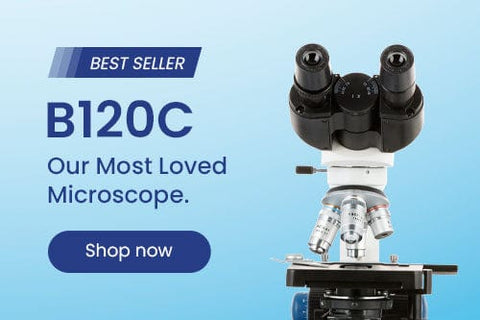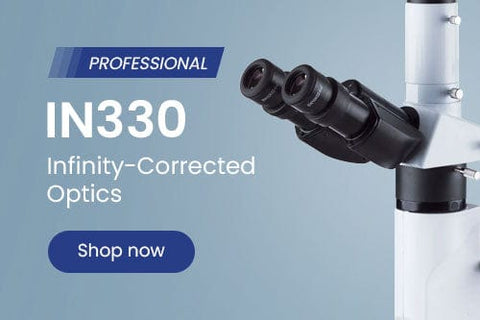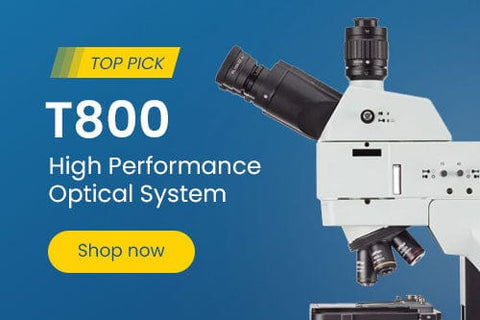- Microscopes
- Cameras
- Lab Supplies & Equipment
- Shop By Brand
- Lab Supplies by Category
- Analyzer Consumables
- Balances
- Bags
- Beakers
- Bench Scale Bases
- Bottles
- Bottletop Burettes
- Bottletop Dispensers
- Boxes
- Blank Microscope Slides & Cover Slips
- Blood Collection
- Caps
- Carboys
- Centrifuges
- Centrifuge Tubes
- Cold Storage
- Containers
- Cryogenic Vials
- Culture Tubes
- Cylinders
- Dispensers
- Digital Dry-Baths
- ESR Products
- False Bottom Tubes
- Flat Bottom
- Funnels
- Gel Documentation
- Glassware
- Glass Test Tubes
- Histology
- Homogenizers
- Hotplates-Stirrers
- Inoculation Loops and Spreaders
- Liquid Handling Products
- Manual-Electronic Pipettors-Pipettes
- Microscope Slides
- Overhead Stirrers
- Pipette Controller (Serological Filller)
- Pipette Tips
- Plastic Test Tubes
- PCR Tubes, Strips & Plates
- Racks
- Repeater Pipettor
- Rockers
- Rotary Evaporators
- Serological Pipettes
- Shakers
- Spectrophotometers
- Syringe Tips
- Sample Tubes
- School/Classroom Supplies
- Screwcap Test Tubes
- Self-Standing
- Test Tube Racks
- Test Tubes & Vials
- Transport & Storage Tubes
- Thermal Mixers
- Transfer Pipets
- Urinalysis
- Vacuum Pumps
- Weighing Dishes
- Lab Equipment
- Balances
- Bench Scale Bases
- Centrifuges
- Digital Dry-Baths
- Gel Documentation
- Homogenizers
- Hotplates-Stirrers
- Overhead Stirrers
- Pipettors
- Rockers
- Rotary Evaporators
- Shakers
- Serological Pipettes
- Spectrophotometers
- Thermal Mixers
- Vacuum Pumps
- Liquid Handling Products
- Manual-Electronic Pipettors-Pipettes
- Pipette Tips
- Racks
- Pipette Fillers-Controllers
- Repeater Pipettor
- Syringe Tips

Cost effective products and solutions designed to improve laboratory efficiency, safety and results.
SHOP BENCHMARK SCIENTIFIC >
- Slides & Accessories
- Slides
- Cameras
- Illuminators
- Adapters
- Eyepieces / Objectives
- Bulbs
- Magnifying Lamps
- Monitors and Tablets
- View All Categories
- Adapters
- DSLR Adapters
- USB Camera Adapters
- Ring Light Adapters
- Power Adapters
- Barlow Lens
- Books & Experiments Cards
- Bags & Cases
- Bags
- Cases
- Cameras
- Circuit Board Holders
- Cleaning Kits
- Condensers
- Darkfield
- Phase Contrast Kits
- Polarizing Kits
- Dust Covers
- Eye-Guards
- Eyepieces
- 20mm
- 23mm
- 30mm
- 30.5mm
- Filters
- Microscope Filters
- Illuminator Filters
- Fluorescence Kits
- Conversion Kits
- Filter Cubes
- Focusing Racks
- Fuses
- Illuminators
- Bulbs
- LED Illuminators
- Fiber Optic Illuminators
- Fluorescent Illuminators
- Ring Lights
- Stand Lights
- Goosenecks
- Gooseneck Attachments
- Immersion Oils
- Loupes
- Magnifying Lamps
- Clamp Lamps
- Desktop Lamps
- Rolling Stand Lamps
- Mechanical Stages
- Monitors and Tablets
- Calibration Slides & Stage Micrometers
- Stage Warmers
- Stain Kits
- Stands
- Articulating Arm Stands
- Boom Stands
- Table Stands
- Tweezers
- Other Accessories
- Shop By Industry
- Shop By Industry
- Botany
- Agronomy & Forestry
- Horticulture
- Phytopathology
- Chemistry
- Biochemistry
- Biotechnology
- Cannabis
- Pharmaceutics
- Consumables
- Beer & Wine
- Cosmetics
- Food & Beverage
- Electronics
- Circuit Boards & General Electronics
- Mobile Phone Repair
- Semiconductors & Wafers
- Environmental
- Asbestos
- Ecosystem Research
- Mud Logging
- Soil Treatment
- Water Treatment
- Forensics
- Ballistics
- Fingerprint Analysis
- Genetic Identification
- Hair & Fiber Analysis
- Handwriting Analysis
- Industrial
- Aerospace
- Automotive
- Dental Lab & Production
- Glass Industry
- Industrial Inspection
- Mechanical Parts
- Paper Industry
- Petrochemical
- Plastics
- Printing Industry
- Quality Assurance & Failure Analysis
- Textiles & Fibers
- Tool Making
- Wood Production
- Jewelry & Gemology
- Engraving
- Gemology
- Jewelry Repair
- Stone Setting
- Watch Repair
- Hobby
- Coins & Collecting
- Stamps
- Modeling & Assembly
- Sculpting
- Repair
- Telescopes
- Metallurgy
- Archaeology
- Geology
- Mining
- Petrology
- Medical & Microbiology
- Anatomopathology
- Bacteriology
- Biochemistry
- Cell Culture
- Cytology
- Dental Microbiology
- Dermatology
- Dissection
- Gout & Rheumatology
- Hair & Fiber Analysis
- Hair Transplant
- Fluorescence
- Hematology & Live Blood Analysis
- Histopathology
- Mycology
- Medical Devices
- Microsurgery
- Neuropathology
- Oncology
- Parasitology
- Pathology
- Semen Analysis
- Virology
- Veterinary & Zoology
- Breeding & Semen Analysis
- Entomology
- Fecal Smears & Floats
- Marine Biology
- Ornithology
- Veterinary Medicine
- Zoology
- Shop By Industry
- Students
- Telescopes
- Buy With Prime
- Sale
- Compound Microscopes
- Shop By Brand
- AmScope
- Euromex
- Omax
- Shop by Head Type
- Binocular
- Monocular
- Trinocular
- Multi-head & Training
- Shop By Specialty
- Brightfield
- Darkfield
- Phase Contrast
- Inverted
- EPIfluorescence
- Polarizing
- Digital Integrated
- Metallurgical
- Shop By Application
- Education
- Research
- Veterinary
- Compound With Digital Head
- Shop Best Sellers
- Shop All Compound
- Stereo Microscopes
- Shop By Brand
- AmScope
- Euromex
- Shop By Objective Type
- Fixed Power
- Zoom Power
- Single Lens
- Common Main Objective
- Shop By Stand Type
- Articulating Arms
- Boom Stands
- Gooseneck Stands
- Table Stands
- Other Stands
- Shop By Head Type
- Binocular
- Monocular
- Trinocular
- Simul-Focal
- Shop By Industry
- Video Inspection
- Industrial Inspection
- Microscope Heads
- Shop Stands
- Articulating Arm
- Boom Stands
- Table Stands
- Stereo With Digital Head
- Shop Best Sellers
- Shop All Stereo
- Specialized Microscopes
- Digital Microscopes
- Kids, Student Microscopes
| AmScope Blogs
The History of the Microscope: An In-Depth Look

Often used as a symbol of discovery and scientific conquest, throughout history the microscope has served as a literal lens into the unknown. Employed by virtually every great scientist, inventor, and disrupter for the past 600-plus years, the amazing magnifier has become a fundamental component in places like classrooms, labs, and workshops. It’s long been used to symbolize curiosity, depth, and discovery, so the next time you’re looking to show your inquisitive side, just add a microscope.
Used in virtually every field—anything from science and medicine to history and art—the microscope is one of the most crucial pieces of science equipment we have at our disposal today. Let’s take a look at an in-depth history of the microscope for a—pun intended—zoomed-in glimpse of this game-changing scientific device and how it helped inform the modern understanding of the world. We think you’ll find the background of the scope worthy of a closer look.
A Microscope’s Purpose
Though we take it for granted today, without this contraption, we wouldn’t have been able to identify dangerous, disease-causing bacteria, invent the microchip, find a cure for polio, or develop life-saving antibiotics. (We also wouldn’t have those endlessly fascinating images of everyday objects zoomed in, which are pretty fantastic). Without it, we wouldn’t be nearly as advanced in the fields of medicine, biology, or engineering.
Microscopes aren’t only used in the sciences, either. They’re also vital to the creative fields such as history, art, and language. Our ability to discover old objects at such an atomic level has clued us into a whole lot about what came before while zooming in has helped us better restore and preserve important relics from the past. In short, microscopy has cemented the need for deeper probing and endless inquiry into the world around us. It teaches us that there’s, most often, much more than meets the naked eye.

A Timeline of Microscopy
According to the writings of ancient Rome, magnifying glasses (single-lens devices that magnify when held close to the eye) and burning glasses have been used as far back as first century A.D. In fact, these magnifying devices are even mentioned in the writings of the Roman philosophers Seneca and Pliny the Elder. Pieces of transparent crystal were used to set fire to parchment or cloth, and the magnifier only grew from there.
Still, it wasn’t until the 17th century that scientists were able to hone the technology into something that resembles what we use in labs and classrooms today. As you’ll discover, the question of who invented the microscope is not simply answered. The device was perfected over centuries, with input and adaptations dreamed up by a team of scientists who contributed to its blueprint throughout modern history. The past 600-plus years of microscopy have granted scientists the tools required to see virtually anything, no matter how tiny.

Read the following microscope timeline to get a more in-depth look at how this magnifier device came to be, from the earliest iterations to the ultra-complex electron microscopes used in highly advanced labs today.
-
1285: Glasses Are Invented—Besides the aforementioned simple lenses created by the Romans, the earliest form of microscopy comes from the art of eyeglass making. The first pair of eyeglasses is thought to have been invented in Italy in the 13th century. The Germans invented the concave lens in 1451, while the Venetians debuted the convex lens not long after. All of these brilliant new developments helped to lay the foundation for the compound microscope, which would soon shake up the scientific universe.
-
1590s: Hans and Zacharias Janssen Make a 9X Magnifier—The Dutch father and son team Hans and Zacharias Janssen, both eyeglass lens grinders, were plugging away honing some of the most cutting-edge new-vision technologies during the late 1500s. They crafted a pair of small, spherical convex lenses—the precursor to the compound microscope—which could magnify up to 9x. Though it had a short focal length, it could bring images into focus over a short distance, so it was ideal for near-sighted customers. The Janssens’ invention changed optometry forever and helped contribute to future progress in microscopy-based scientific research.
-
1609: Galileo Perfects the Microscope—It’s only fitting that the father of modern physics and astronomy would be a part of the invention of the microscope. Galileo heard of the early experiments by Janssen and other scientists and helped to refine the principles of lenses in order to create a more enhanced focusing device. One of his primary contributions to microscopy was the discovery that telescopes could be modified by lenses with a shorter focal length to look at tiny objects. He developed a set of mini telescopes with two lenses: a bi-convex objective and a bi-concave eyepiece. He later invented the occhiolino, with three bi-convex lenses.

-
1625: Giovanni Faber Coins the Word “Microscope”—Galileo’s occhiolino didn’t become “the microscope” until the year after it was invented when the German botanist Giovanni Faber coined the word from the Greek words for micron (small) and skopein (to look at). Faber, like Galileo, was a member of the Accademia dei Lincei, the science academy whose students also helped to coin the word “telescope.”
-
1665: Robert Hooke Discovers Cells—English natural philosopher Robert Hooke is credited with discovering the basis of all life on earth: the cell. He did this by building upon the Janssen design to develop the first usable light microscope. With his new iteration, Hooke was able to observe feathers, the eyes of houseflies, and thin slices of cork (which are really just dead plant cells) at a microscopic level. With their tiny honeycomb-like building blocks, the tissues Hooke observed reminded him of monks’ chambers, so he named them “cells.” He published his findings in a book called Micrographia.
-
1670: Antony Van Leeuwenhoek Perfects the Microscope—Dutch scientist Antony Van Leeuwenhoek is said to have been inspired by Hooke’s Micrographia to focus much of his attention on microscopy. After learning to expertly grind and polish lenses, he developed a cutting-edge new lens that could magnify up to 270x, which allowed him to become the first person to view live cells under a microscope. With this, he discovered bacteria that no one knew existed—including bacteria found in saliva and rainwater—which he named “animalcules.” Van Leeuwenhoek was also the first person to observe human cells, including red blood cells and sperm.

-
Late 1800s:The Modern Microscope Is Born—By the late 1800s, scientists had perfected a version of the microscope very similar to the one we know today, with a stage for the specimen, an ocular lens, objective lenses, and a light source. It’s official: Modern microscopy is born! Contributing to this new phase of science is New York scientific pioneer Charles A. Spencer, who invented the first American-made achromatic objective microscope and sold it commercially beginning in 1838. Spencer’s partnership with manufacturer A.K. Eaton marks the beginning of a blossoming microscope industry in America. These fine optical instruments became staples in scientific environments for the next century.
-
1926: Richard Zsigmondy Wins Nobel Prize for the Ultra Microscope—With the microscopic revolution in full swing and technology rapidly growing, scientists are able to take the foundations of microscopy and shake them up even more using new technological advancements. One such example is the ultra microscope, invented by Austrian chemist Richard Zsigmondy. This microscope works by aiming a high-powered light beam through a colloid of particles, allowing us to see particles smaller than a wavelength of visible light.
-
1931: Max Knoll and Ernst Ruska Invent the Electron Microscope—As far as microscope technology goes, nothing is quite as impressive as the electron microscope. In the year 1931, German electrical engineer Max Knoll and physicist Ernst Ruska invented this incredible new tool. Instead of light, the electron microscope uses a focused beam of electrons to create an image. It’s capable of far greater magnification (up to 1 million x) and resolution than a light microscope, making it possible to view objects as small as an atom. For his development, Ruska earned half of the Nobel Prize for Physics in 1986. The only downfall of this invention is that living specimens are destroyed by the high resolution of the electron beam, so light microscopes are still needed to examine living cells.
-
1953: Frits Zernike Wins Nobel for Phase Contrast Method—In 1953, Dutch physicist FritsZernike won the Nobel Prize for Physics for his invention of the phase contrast microscope, which allows us to see colorless and transparent materials at a microscopic level. This brand-new frontier of microscopy allowed scientists to view cells without staining them (which would kill them), in order to view internal cell structure. The contrast-enhancing technique is ideal for viewing living cells, including cultures, tissues, and microorganisms, and is still widely employed in scientific research today.
-
1986: Gerd Binnig and Heinrich Rohrer win Nobel for the Scanning Tunneling Microscope—Winning the second half of the 1986 Nobel Prize for Physics—that was an amazing year for microscopy, huh?—physicists Gerd Binnig and Heinrich Rohrer developed the scanning tunneling microscope (STM), which is used to image surfaces at the atomic level. It uses neither a light nor an electron beam, but instead an ultrafine tip that’s able to reveal the molecular and atomic details of an object.

Modern Developments in Microscopy
If you thought the microscopy-related discoveries were long over, you’ll be shocked to find that there are still all sorts of fascinating microscopic advancements on the horizon. These days, the world of microscopy is as captivating as it was hundreds of years ago. In 2008, the Department of Energy installed the world’s most powerful transmission electron microscope (TEM)—dubbed TEAM 0.5—at the National Center for Electron Microscopy’s Lawrence Berkeley National Laboratory. The ultra-bright electron beam emitted from TEAM 0.5 will help researchers capture three-dimensional images of individual atoms. Amazing, huh?
In 2013, a group of chemists used biomolecules, seen under a confocal microscope via green fluorescent proteins, to demonstrate one manner in which life on earth could have started. These developments are great examples of where microscopy is now and where it’s headed: to an even more informative and new frontier. The future of microscopy will be built upon the convergence of powerful technology and the well-honed principles developed by the great scientific pioneers of the past few thousand years. We will, in all likelihood, continue to perfect this scientific realm in order to support the further scientific discovery of the future.

Using Microscopes for Modern Applications
You don’t need a million-dollar electron microscope to see the world up-close. Today, compound and stereo microscopes are still considered the gold standard for a vast majority of applications, whether you need something to help you see the nitty-gritty of a 200-year-old document, to repair the tiny, mechanical components of a wristwatch, or to identify and study disease-causing microorganisms. AmScope can help you find the perfect microscope for your unique needs, budget, and requirements, no matter what you want to zoom in on. Contact our experts for any of your microscope questions and needs.
Free Shipping on orders $149+
Same day shipping for orders within the contiguous U.S.
Easy Returns
Hassle-free 30-day return policy. 100% satisfaction guarantee.
Quality Products
5-year warranty on AmScope microscopes.
Got a question?
Speak to our team of experts and find the products you need.
















